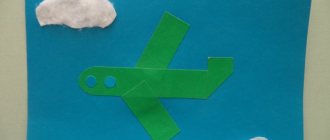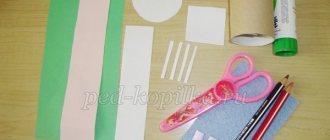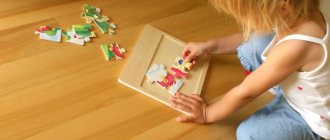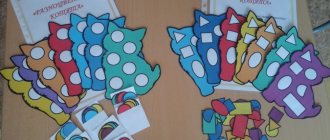Modeling from plasticine in elementary school: the benefits and goals of creative activities
When working with plasticine, fine manual motor skills develop.
During this process, children also improve and develop:
- logical thinking;
- memory;
- motor coordination;
- speech;
- perseverance and patience;
- Creative skills;
- abstract and figurative understanding;
- imagination;
- attentiveness;
- emotional condition;
- self-esteem;
- hand-eye coordination;
- manual touch;
- observation and eye.
The tasks of modeling from plasticine are:
- formation of ideas about shapes and colors;
- safety training with material during classes;
- stimulation of fantasy and imagination;
- distraction from irritating and harmful factors;
- learning to cope with one’s own anxieties and fears;
- improving the condition of the nervous system and the body as a whole;
- nurturing self-confidence;
- developing interest in creativity;
- formation of aesthetic taste;
- training in the three-dimensional method of depicting objects.
Tips for creating plasticine applications
There are no generally accepted standards for making applications from plasticine. While developing a creative idea, you can turn on your imagination to the fullest. Various techniques can be easily combined with each other. For example, an outline of flagella can be filled with smudges or beads.
You can choose any picture as an idea for an application. It can be used as a template. Ready-made templates for applications can be found on the Internet. To work, you will need to download and print them.
If you get your child interested in creating plasticine applications, he will spend time usefully, developing his creative abilities and fine motor skills.
Types of beautiful and safe plasticine for children
The table will introduce safe and non-toxic types of plasticine for children:
| Plasticine type | Features of the material |
| Classical | It can be soft or harsh; quite soiled, difficult to wash. |
| Wax | Very soft and sticks well. |
| Ball | In the form of weightless granules, which are connected by harmless glue; can glow in the dark and adheres perfectly to paper. |
| Solidifying | It dries within a day and is suitable for creating entire collections of crafts, for example, Christmas tree decorations. |
| Art plasticine | The hard one is intended for three-dimensional crafts, and the soft one is for plasticineography and appliqués. |
| Floating | Non-fading crafts made from it can float. |
Age category
It is recommended to start making simple crafts from plasticine from the age of one. However, each child needs an individual approach. First you need to show your child how to make a craft from plasticine, and if he shows interest, then you can continue the process with him. Otherwise, leave your classes for a later time.
From 1 to 3 years old, children begin to control their hands; at this age it is advisable to accustom the child to simple activities:
- Knead the plasticine;
- Tear off pieces from it;
- Roll into balls;
- Crush and flatten the balls with your palms or suitable objects;
- Roll rolls of various thicknesses and lengths;
- Wrap the rolls in rings;
- Sculpt a whole craft from individual parts.
For children of this age group, it is advisable to purchase air plasticine.
From 3 to 5 years old, a child already has full control of his hands and can sculpt from ordinary plasticine, and he can make crafts that are more complex, interesting, and carry some meaning.
Turtle
Make a small plasticine craft with your child; with step-by-step instructions you will very quickly master the entire manufacturing process. A funny turtle will complement your collection of crafts.
How to sculpt:
- Prepare several circles of different sizes using a brown and green base.
- Use a brown circle to form a “shell” for our turtle.
- Flatten small circles from the brown base and attach them to the “shell”, forming a characteristic color for this animal.
- Sculpt legs and a head from a green base and attach to the prepared body.
- Make indentations on the muzzle where the eyes will be placed, draw a nose and mouth.
- Then attach the eyes too.
Materials and tools for modeling
In addition to the spatula, it is worth thinking about preparing the workplace.
Suitable working surface:
- Special board;
- Oilcloth;
- Sheet of cardboard;
- Kitchen cutting board.
Some natural and artificial materials may also be useful, such as:
- Cones;
- Nuts;
- Pebbles;
- Beads;
- Rhinestones, etc., it all depends on the intended product.
Kitten with a heart
On Valentine's Day, you can give not only valentines, but also original crafts. We recommend that you make a kitten from plasticine step by step according to the photo instructions provided.
Sculpting technique:
- From a blue base, mold a body in the shape of a heart, a tail, and ears.
- Connect these parts and stick stripes of a lighter shade on top, creating a “cat” color.
- Make the muzzle, eyes and nose as shown in the photo.
- Detail the animal's face using a stack.
- All that remains is to attach the paws, the heart is made from a red base.
- The holiday craft is completely ready.
Subjects
You can play grocery store with your children by making food crafts from airy plasticine. The child will really like this game, especially if you choose plasticine in bright, beautiful colors for this purpose.
You can mold anything from any plasticine. The main thing is that the baby likes it. Most often they make crafts from plasticine on the topic:
- Animal world. A popular topic among children of different ages and genders.
- Vegetable world. The types of crafts depend on the imagination and age of the child.
- Food. A theme for any age. Little kids can make vegetables and fruits, and older children can make cakes, pastries, and restaurant dishes with beautiful decorations.
- Thematic figures. For each event, you can create symbolic figures that can lift the spirits of adults and children.
To make crafts you will need a special plastic tool. Often it comes complete with plasticine.
What kind of plasticine is suitable for plasticineography?
Plasticine, as you know, can be different. One is too hard, the other, on the contrary, is soft, and also leaves greasy marks. The third one is terribly sticky to your hands. It turns out that not every plasticine that is suitable for modeling is suitable for plasticine printing. So which one should you choose for painting?
Classic plasticine is good for everyone: bright, inexpensive, does not stain your hands, does not leave greasy stains, but is very hard and does not apply well to the base. But its wax analogue has good adhesion to the base, is soft, comes in a rich color palette, does not crumble and is ideal for painting with plasticine.








